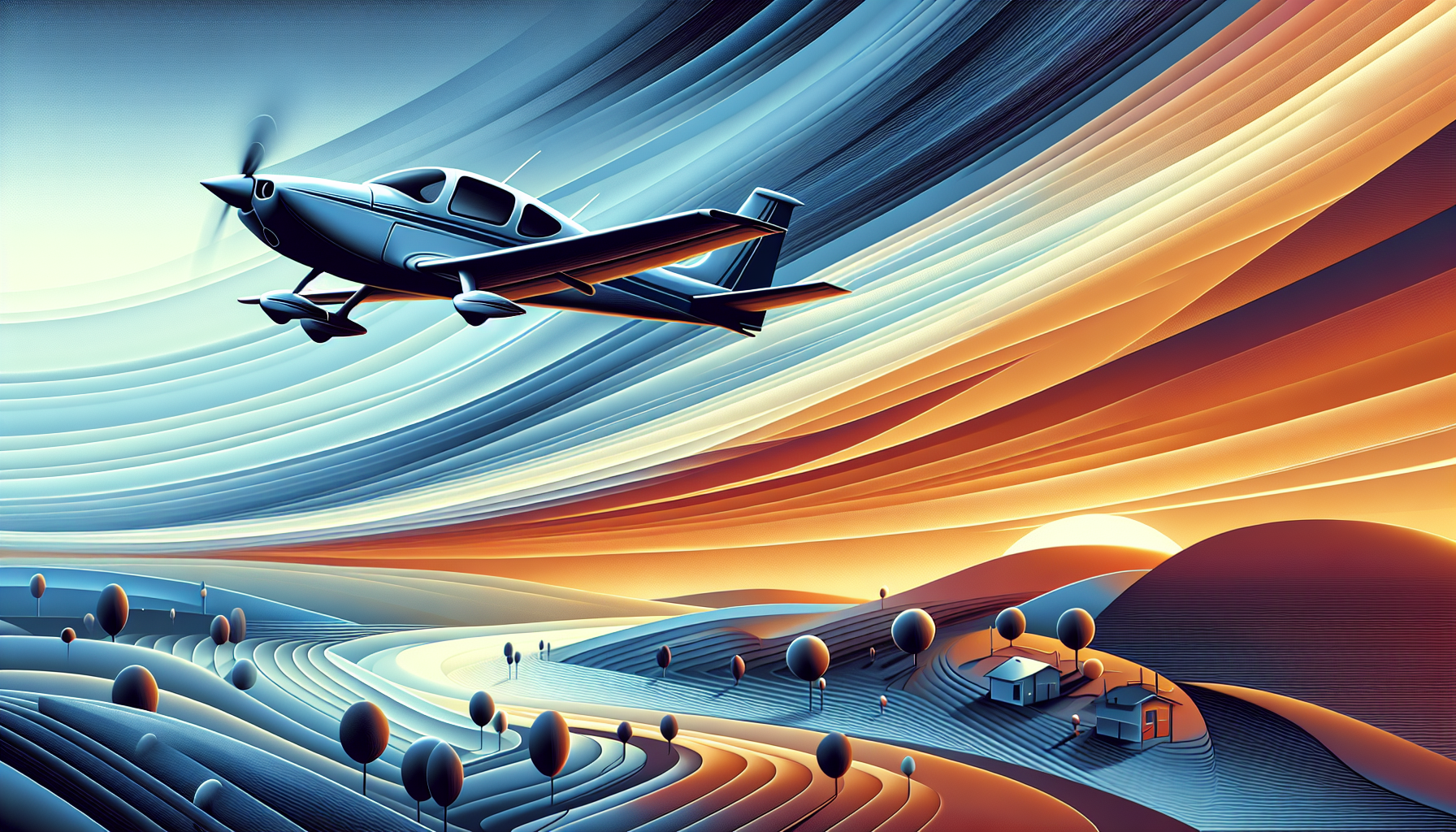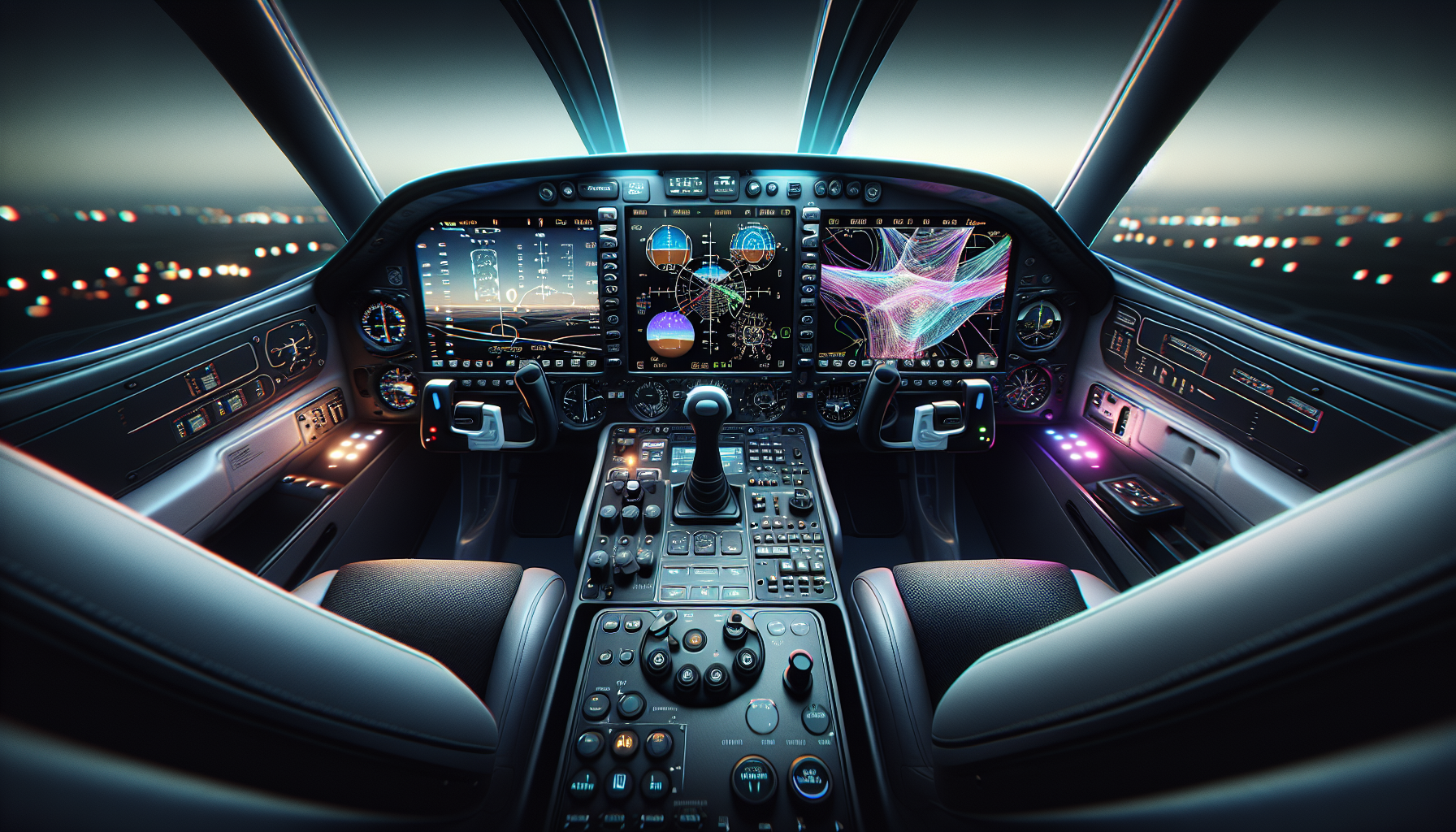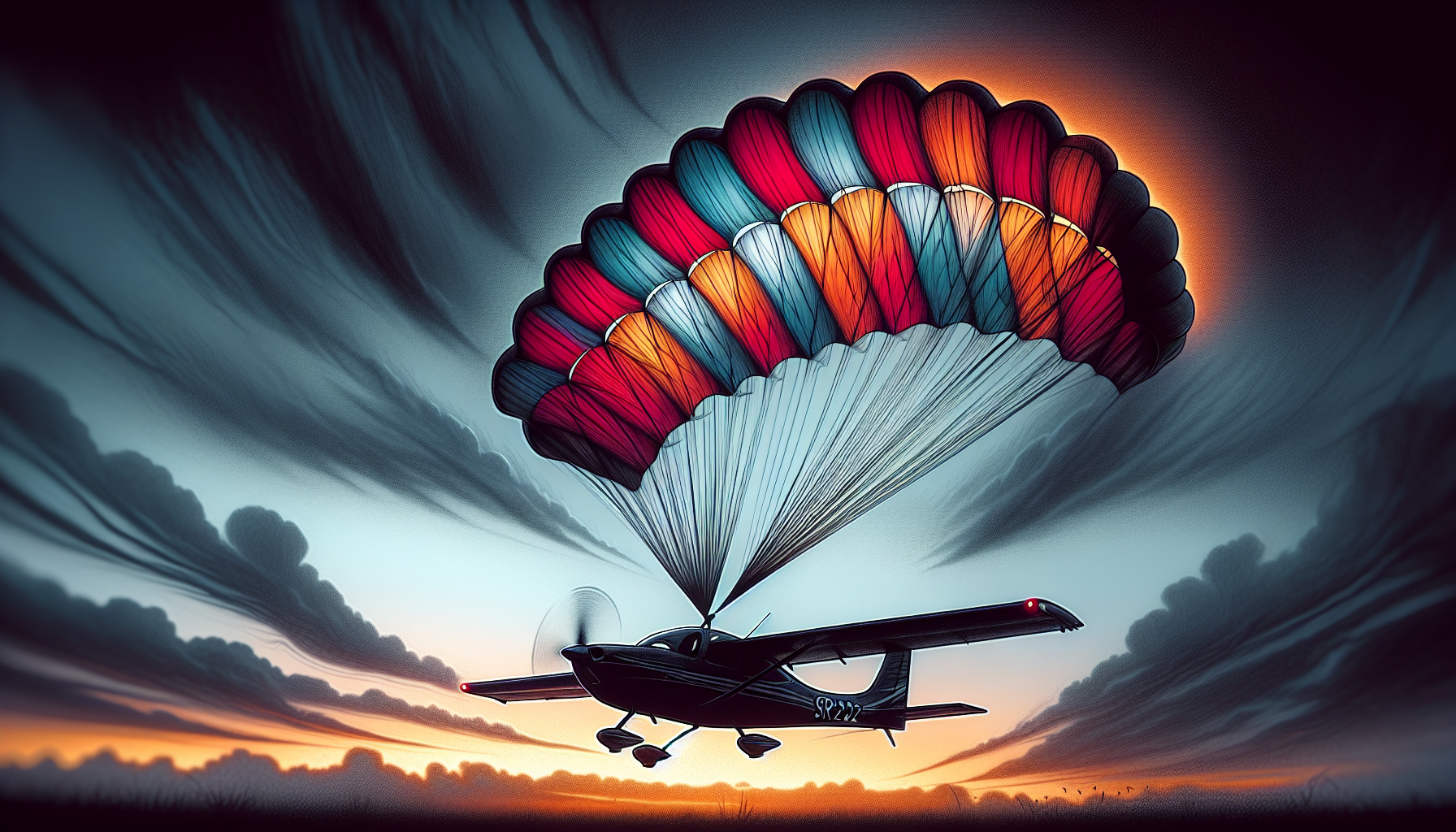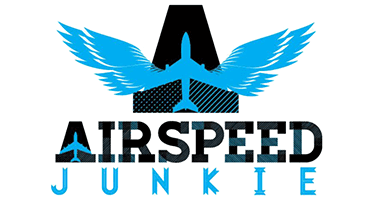Top Features and Performance of the SR 22 Cirrus Aircraft
What makes the SR 22 Cirrus aircraft stand out? This article breaks down its top features, performance stats, and innovative technology.
Key Takeaways
-
The Cirrus SR22 has evolved significantly since its certification in 2000, introducing key innovations like the Avidyne Entegra glass cockpit in 2003 and the turbocharged SR22 Turbo in 2006, which have set new standards in general aviation.
-
Key specifications of the SR22 include a 310 hp Continental IO-550-N piston engine, a useful load of 519 kg, and advanced safety features such as the Cirrus Airframe Parachute System (CAPS), which has been activated 126 times with 107 successful deployments.
-
Advanced avionics in the SR22 include the Cirrus Perspective Touch by Garmin, which offers features such as 3D SafeTaxi, alert-linked checklists, and a digital autopilot with electronic stability protection (ESP), enhancing both safety and situational awareness for pilots.
The Evolution of Cirrus SR22

Dale and Alan Klapmeier’s visionary journey initiated with building kit airplanes, which eventually led them to establish Cirrus Design and develop the SR22. Their passion for aviation led them to develop what would become one of the most iconic aircraft in general aviation. The SR22 received its certification in November 2000, marking its official introduction to the market and setting the stage for its future success.
The evolution of the SR22 took a decisive turn with the advent of the Avidyne Entegra primary flight display in 2003, making it the first light aircraft to come with a full glass cockpit. This innovation not only enhanced the flying experience but also set a new standard for avionics in general aviation, paving the way for advanced aircraft like the Vision Jet. The SR22 continued to evolve, and in 2006, the introduction of the SR22 Turbo brought major advancements in engine management systems, further enhancing its performance and reliability.
The SR22, a prominent model in the SR series aircraft lineup, has transformed from a humble kit airplane to a leading single-engine piston aircraft, exemplifying Cirrus’s unwavering dedication to innovation and excellence. The SR22 is not just an airplane but a symbol of safety and advanced technology in aviation, thanks to features such as:
-
The Cirrus Airframe Parachute System (CAPS)
-
Advanced avionics systems
-
High-performance capabilities
-
Comfortable and luxurious cabin
These groundbreaking features have made the SR22 GTS just such an airplane that has become a top choice for pilots around the world.
Key Specifications of the Cirrus SR22
As a testament to modern aircraft design, the Cirrus SR22 masterfully blends performance, safety, and comfort. This single-engine, four- or five-seat composite aircraft features a larger wing, higher fuel capacity, and a powerful engine, making it a standout in the world of general aviation. The SR22 was also the first light aircraft to feature a full glass cockpit and a lightweight composite propeller, showcasing Cirrus’s dedication to innovation.
The SR22’s features include:
-
310 hp Continental IO-550-N piston engine, celebrated for its reliability and performance
-
For those seeking even more power, the SR22T uses a turbocharged Continental TSIO-550-K engine, offering enhanced performance at higher altitudes
-
Stall speed of 60 knots with flaps down, ensuring safe and stable operations even at lower speeds.
In terms of load capacity, the SR22 boasts a useful load of 519 kg, while the SR22T offers approximately 1,243 pounds, making it versatile for various missions. These specifications highlight the SR22’s capability to handle a range of flying conditions and needs, providing pilots with an aircraft that is both powerful and adaptable.
Performance and Capabilities
With its impressive performance and capabilities, the Cirrus SR22 has earned a prominent place in the hearts of pilots. The SR22T, the turbocharged version, can reach a maximum operating altitude of 25,000 feet, thanks to its built-in oxygen system, ensuring safe operations at higher altitudes. The non-turbo SR22 can still achieve a respectable maximum altitude of 17,500 feet, making it suitable for a wide range of flight profiles.
When it comes to speed, the SR22T has a maximum cruise speed of 211 knots and a top speed of 219 knots, allowing for swift and efficient travel. The standard SR22 offers a maximum cruise speed of 185 knots, which is more than adequate for most general aviation needs. Additionally, the SR22T boasts a maximum range of 1,200 nautical miles at 55% power, while the SR22 can achieve up to 1,170 nautical miles, providing excellent endurance for long-distance flights.
The SR22’s performance is further enhanced by the Continental 550 engine, which is highly regarded for its smooth operation and efficiency when operated lean-of-peak. With a climb rate of 1,400 feet per minute, the SR22 ensures quick ascents to cruising altitude, reducing pilot workload and enhancing overall flight efficiency. These capabilities make the SR22 a versatile and powerful aircraft, perfect for a variety of flying missions.
Advanced Avionics and Technology

The Cirrus SR22 boasts cutting-edge avionics and technology, standing out in general aviation. The Cirrus Perspective Touch by Garmin is a standout feature, offering Aircraft Systems Synoptic Pages that provide an overview of the aircraft’s systems, reducing pilot workload and enhancing situational awareness. The Alert-Linked Checklists automatically display relevant checklists based on system alerts, ensuring pilots have the right information at the right time.
Bluetooth connectivity in the Cirrus Perspective Touch allows for wireless syncing of mobile devices, making it easier to transfer flight plans and view weather and traffic information during flight planning. The Garmin 3D SafeTaxi feature provides a 3D virtual image of ground and water features, obstacles, and traffic on the primary flight display, further enhancing safety and situational awareness.
The digital autopilot in the SR22 offers several crucial features, including:
-
Precise lateral and vertical navigation guidance
-
Blue Level Button for added safety
-
Electronic stability protection (ESP) system that passively corrects unusual flight attitudes even when the autopilot is not engaged
-
Flap Airspeed Protection system that monitors airspeed to prevent accidental deployment or retraction of flaps
-
SurfaceWatch technology that ensures proper alignment with the correct runway and displays remaining runway lengths, adding an extra layer of safety during takeoff and landing.
Safety Features of the Cirrus SR22

The Cirrus Airframe Parachute System (CAPS) stands out as one of the Cirrus SR22’s most revolutionary safety features. This whole-plane ballistic parachute recovery system sets the SR22 apart from other single-engine piston aircraft, providing an unparalleled level of safety. CAPS has been a key selling point, especially for non-pilot passengers, offering peace of mind in the event of an emergency.
The development of CAPS began in the mid-1990s, with the first test conducted in 1998 over the high desert of southern California. It was developed in collaboration with Ballistic Recovery Systems (BRS) and became the first ballistic parachute system to achieve FAA certification in October 1998. The first emergency deployment of CAPS occurred in 2002 over Lewisville, Texas, with the pilot emerging uninjured, demonstrating the system’s effectiveness.
As of September 2021, CAPS had been activated 126 times, with 107 successful deployments and 220 survivors. The system uses a small solid-fuel rocket to deploy the parachute canopy fully within seconds, providing a rapid and reliable method of bringing the aircraft safely to the ground. This groundbreaking safety feature has undoubtedly saved lives and continues to be a defining characteristic of the SR22.
Comfort and Convenience
The Cirrus SR22 offers more than just performance; it also ensures comfort and convenience. The interior design has been reimagined to provide improved legroom and visibility, making for a more comfortable cabin experience. An upgraded environmental control system, including air conditioning, with a central, intuitive layout ensures that both pilots and passengers can enjoy a comfortable flight, regardless of the weather outside.
The SR22 features:
-
A keyless baggage door that can be unlocked remotely, with a deeper pocket for storing oil canisters and other essentials
-
Automotive-inspired 60/40 Flex Seating™ that allows for flexible loading of gear like skis and bicycles, making it easy to adapt the aircraft for different missions
-
High-power USB-C ports, including one 60-watt and three 15-watt ports, for faster device charging, ensuring that passengers can stay connected and powered up throughout the flight.
Deliberate accent lights and illuminated cupholders add a touch of elegance to the inflight environment, creating a more pleasant and enjoyable experience for both pilots and passengers. These thoughtful design features make the SR22 not just a high-performance aircraft, but also one that prioritizes comfort and convenience.
Training and Support
Understanding the significance of proper training and support for SR22 pilots, Cirrus provides a wide array of programs and resources. The Cirrus Private Pilot Program provides a fully immersive flight training experience, combining online coursework with in-person sessions to ensure pilots are well-prepared to fly a Cirrus aircraft. Training includes interactive simulator sessions and flight lessons tailored specifically for the SR22, helping pilots gain confidence and proficiency.
The program requires a partnership with a Cirrus Training Center (CTC) or Cirrus Standardized Instructor Pilot (CSIP), with over 800 CTCs and CSIPs available for in-person training. Additionally, the Cirrus IQ system offers real-time aircraft communication and maintenance support, ensuring that pilots always have access to the information and assistance they need.
Customization Options
The Xi Design Studio allows Cirrus SR22 owners to imprint their personal touch on their aircraft with a variety of customization options. Owners can work directly with an Xi Specialist to tailor every detail of their aircraft, from selecting materials and options to choosing every stitch in the seats. This level of personalization ensures that each SR22 is unique and perfectly suited to its owner’s preferences.
The customization process includes selecting the base color palette for the aircraft, as well as choosing custom graphics for business promotion or personal expression. The Xi Design Studio, located at the Vision Center Campus in Knoxville, Tennessee, provides a space for owners to make these design decisions with the help of sketches and samples for approval. This bespoke approach to aircraft design ensures that each SR22 is a true reflection of its owner’s style and needs.
Operational History and Usage
The Cirrus SR22, with its rich operational history, has been versatile in fulfilling a range of roles. Some examples include:
-
In May 2022, Joby Aviation, a California-based air taxi company, received FAA Part 135 air service certification, highlighting the aircraft’s suitability for commercial operations.
-
Fly Aeolus, a Belgian fractional ownership company, operates the largest fleet of SR22s in Europe, with 13 aircraft.
-
ImagineAir also operated the largest fleet of Cirrus SR22s for several years, demonstrating the aircraft’s reliability and popularity in the air taxi market.
The SR22 has also found a place in military training, with the following examples:
-
The French Air and Space Force using six SR22s as training aircraft
-
The Royal Saudi Air Force acquiring 25 SR22s in 2013 to replace Cessna 172s as primary trainers
-
Emirates purchasing 22 SR22 aircraft for training purposes in 2015
These examples underscore the SR22’s versatility and effectiveness as a training platform.
Despite its many successes, the SR22 has also been involved in numerous accidents and incidents. Between 2001 and May 2014, 147 U.S.-registered Cirrus SR22 aircraft crashed, highlighting the importance of continued focus on safety and training. However, the SR22 has also been part of notable achievements, such as Australian pilot Ryan Campbell using an SR22 to become the youngest pilot to fly solo around the world on September 7, 2013. These operational highlights illustrate both the potential and challenges of flying the SR22.
Comparing the SR22 to Other Aircraft
Comparing the Cirrus SR22 with other aircraft, like the Diamond DA62, highlights several distinctive differences and similarities. Both aircraft cruise at about 180 KTAS and burn less than 18 gallons per hour during cruise, making them efficient choices for general aviation. However, the DA62’s diesel FADEC engines are noted for their power, ease of management, and efficiency, burning Jet-A fuel.
One of the distinguishing features of the SR22 is its fixed landing gear, which contrasts with the DA62’s retractable landing gear. While retractable gear can offer aerodynamic benefits, it often leads to higher insurance rates, making the SR22 a more cost-effective option for many pilots. Additionally, the DA62 is favored for its comfort during long cross-country flights, offering ergonomic controls and ample baggage space, but the SR22’s interior design and comfort features also make it a strong contender in this category.
Overall, the SR22’s combination of performance, safety, and comfort makes it a compelling choice for a wide range of pilots, standing out even when compared to other high-performing aircraft in the market.
Summary
The Cirrus SR22 is more than just an aircraft; it is a symbol of innovation, safety, and performance in the world of general aviation. From its inception by the visionary Klapmeier brothers to its status as a market leader, the SR22 has continually pushed the boundaries of what a single-engine piston aircraft can offer. Its advanced avionics, powerful engines, and unparalleled safety features, like the Cirrus Airframe Parachute System (CAPS), make it a standout choice for both seasoned and aspiring pilots.
Whether you are considering the SR22 for its top-of-the-line performance, advanced avionics, or its impressive safety record, this aircraft promises to deliver an exceptional flying experience. As you explore the world of aviation, the SR22 stands out as a reliable, innovative, and highly capable aircraft that continues to set the standard in general aviation. So, take to the skies with confidence and experience the unmatched capabilities of the Cirrus SR22.
Frequently Asked Questions
What makes the Cirrus SR22 stand out from other single-engine aircraft?
The Cirrus SR22 stands out from other single-engine aircraft due to its advanced avionics, powerful engines, and unique safety features, such as the Cirrus Airframe Parachute System (CAPS), providing unmatched safety for pilots and passengers.
What are the performance capabilities of the SR22?
The SR22T can reach a maximum operating altitude of 25,000 feet, with a maximum cruise speed of 211 knots and a range of up to 1,200 nautical miles, while the standard SR22 can achieve a maximum altitude of 17,500 feet and has a maximum cruise speed of 185 knots with a range of up to 1,170 nautical miles. These performance capabilities make the SR22 a versatile and efficient aircraft choice.
How does the SR22 compare to other similar aircraft?
The SR22 and the Diamond DA62 have similar cruising speeds and fuel efficiency, but the SR22's fixed landing gear can be more cost-effective due to potentially lower insurance rates compared to the DA62's retractable gear.
What training and support options are available for SR22 pilots?
The Cirrus Private Pilot Program provides fully immersive flight training with online coursework and in-person sessions, with over 800 Cirrus Training Centers (CTCs) and Cirrus Standardized Instructor Pilots (CSIPs) available for in-person training.
What customization options are available for the Cirrus SR22?
You can personalize your Cirrus SR22 through the Xi Design Studio, choosing materials, colors, and custom graphics with the help of an Xi Specialist to tailor every detail of your aircraft. This customization offers a range of options for a personalized touch.







